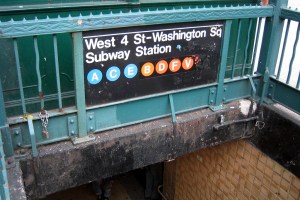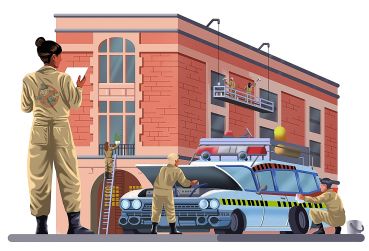 The city’s Landmarks Preservation Commission on Tuesday expanded the Greenwich Village historic district, adding 235 buildings and 11 blocks between West 4th and West Houston streets, bordered by Sixth and Seventh avenues.
The city’s Landmarks Preservation Commission on Tuesday expanded the Greenwich Village historic district, adding 235 buildings and 11 blocks between West 4th and West Houston streets, bordered by Sixth and Seventh avenues.
This extension—on the heels of a 2006 addition of 45 buildings to the area initially landmarked in 1969—brings the historic district to a total of 2,320 buildings. Included in the add-on is Our Lady of Pompeii, a Baroque-style Catholic church on Bleecker Street, and the West 4th flatiron-shaped Varitype building.
Not surprisingly, the commission’s press release took a very different tone than the Greenwich Village Society for Historic Preservation’s release, which criticized the city’s lack of commitment to preservation, despite this large expansion. These preservationists lament that the south Village, an area that they say deserves equal recognition as its neighboring named-communities like Greenwich Village and Soho, has not been included in the city’s landmarking efforts.
The proposed Grand Concourse Historic District in the Bronx passed a hurdle, too, completing its mandatory public hearing on Tuesday, bringing it one step closer to actual designation.
Other finalized landmarks include two Bronx structures: the seven-story Haffen building in Melrose, and the Noonan Plaza Apartments on 168th Street, considered one of the best Art Deco rental complexes in the Bronx.
Likewise, the city began the landmarking process on several new buildings, adding six properties to the calendar, a step that typically leads to landmark designation.
Of note are two hotels, the Mills Hotel No. 3, on 36th and Seventh Avenue, and Hotel Wilcott on West 31st Street. The Mills Hotel is a 16-story neo-Renaissance building built in 1906 and 1907, as the largest of three Darius Ogden Mills residential hotels (The New York Times, upon the hotel’s opening, declared it the “finest for the use of men of limited means in the world.”). Hotel Wilcott, the “New York City Discount Hotel,” is a Beaux-Arts artifact of the hotel district development at the turn of the century.
Also added to the calendar at the hearing was the 1926 Madison Belmont Building on Madison Avenue; the 1931 500 Fifth Avenue Building, the 1907 Engineers’ Club; and the 1915 Grand Street Playhouse. The Grand Street Playhouse, constructed from 1913-15, was one of the city’s early “little theaters,” that featured new works of George Bernard Shaw, James Joyce, Eugene O’Neill and other 20th-century playwrights.
Hearing dates weren’t immediately scheduled for the newest items.


